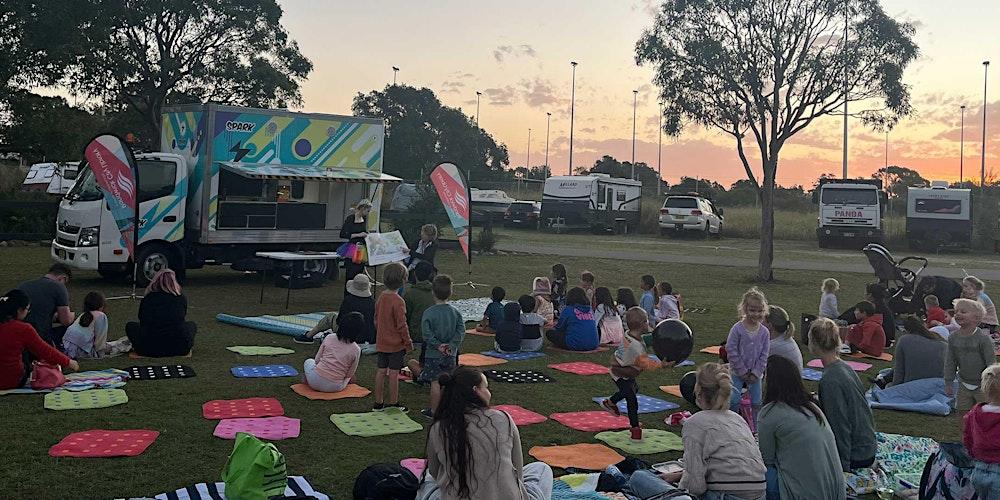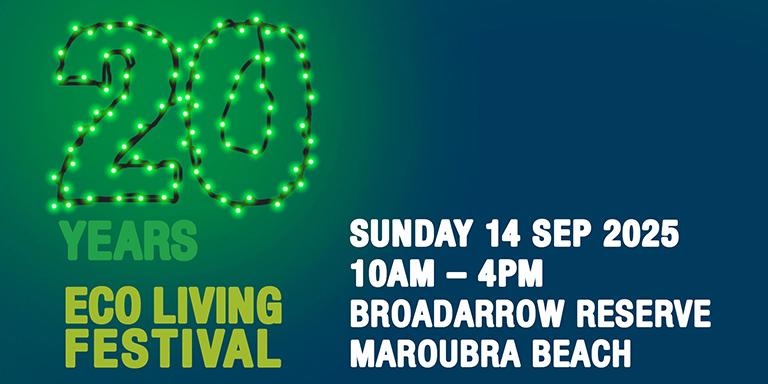
Every March our attentions turns to The Spot in Randwick as we celebrate The Spot Festival. It’s the spot to be, but just why is it called The Spot? Our Local Studies Librarian Georgina Keep found out the answer is not straightforward.
One of the most asked questions about our local history is “How did ‘The Spot’ gets its name?”. The answer is not that straightforward.

Post European arrival, The Spot locality at Randwick was settled in the early 1850s by two families of Irish and Scottish ancestry. It was known as Irishtown with a settlement known as Struggletown located further west near Jane and Middle Streets, closer to the latter Newmarket Stables and now Newmarket residential precinct. This westerly settlement was an area of modest worker cottages inhabited by market gardeners and others – many with strong connections to Simeon Pearce and his family from Gloucestershire in England.
In the eastern portion, by the 1880s, a parcel of land bounded by Avoca, Barker, St Pauls Streets and Perouse Road was subdivided and auctioned for residential development. It was advertised as the Carlton Estate, ‘Randwick Heights’. Randwick Council minutes from the same year refer to the area as ‘Lower Randwick’.
The alignment of Perouse Road is one of the oldest thoroughfares in the district. It partially represents the established routes of our First Nations peoples who regularly traversed this natural thoroughfare of for tens of thousands of years, eventually reaching what we now call “Frenchman’s Road”. The natural route from Botany Bay to Sydney Harbour and back was partially along this alignment and Frenchman’s, following the topography of the terrain. It has long been a natural transport hub.
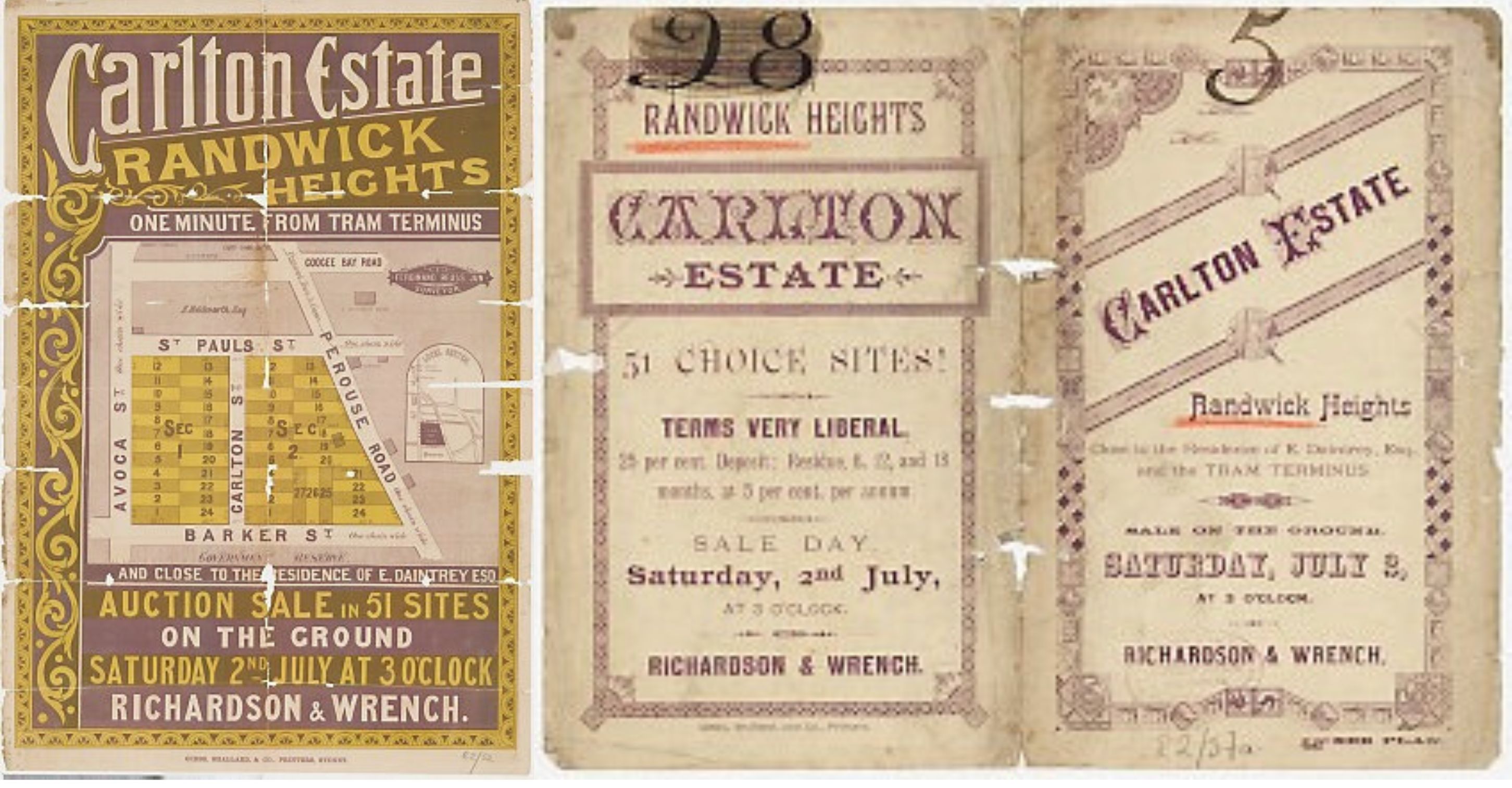
We have been trying to find the earliest reference to the naming of The Spot.
In 1909, the first published history of the district, Randwick 1859-1909, the author D.M.Cooper (a former Mayor of Randwick and Alderman) has this to say about the locality now incorporating The Spot–
The portion of Randwick south of St Paul Street was known as ‘Struggletown’, and another portion ‘Irishtown’, and retained these names till recent years. Some now refer to this portion of the municipality as ‘Lower Randwick’, but the writer strongly urges all and sundry to give the locality it’s correct name of South Randwick.
Almost twenty years later, the local newspaper South Sydney News for the 24 December of 1927 has ads referring to local businesses at The Spot. This business appears to be what locals later remembered by the 1980s as “The Spot Cash” from their childhood. It is the earliest reference we can find to origin of the name.
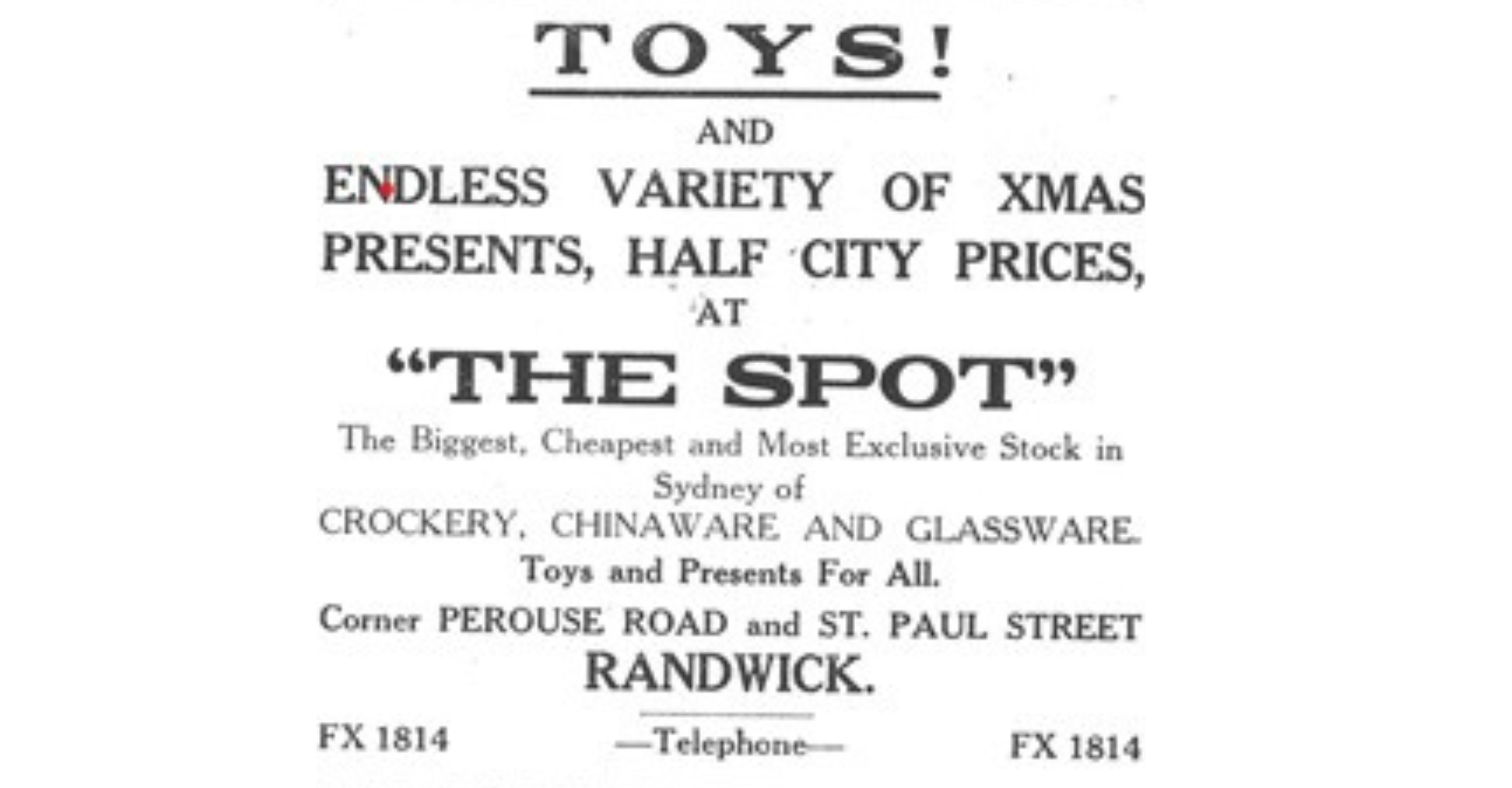
During World War Two, in 1941, the Randwick District News began to compile a History of the Randwick Municipality, maybe as a morale booster. The entry for the 3 July 1941 dealt with the naming of The Spot and is reproduced here in full –
The Spot, so called after The Spot Ironmongery Store in Perouse Road, carried on and christened by the proprietor, Mr F Tyerman, has been known by many names in days gone by.
Originally known as Struggletown, Lower Randwick, Pardy’s Corner and South Randwick, the Spot is destined to one day be the leading shopping centre of Randwick.
The name Struggletown was no doubt adopted in the early days for it was the home of the poorer classes in contrast with the wealthy people living in Randwick proper.
On the land fronting Perouse Road and facing Barker Street was a well which was used to supply the people with water.
Close to Barker Street was a gravel quarry and gravel from it can still be seen on some of the footpaths of the old homes in Randwick.
When the Eastern Suburbs Railway is built, there will be an entrance close to Randwick Station in High Cross Reserve, and no doubt business sites close to it will become very valuable.
Perouse Road is one of the oldest streets in Randwick and was constructed in 1861. In 1900 when Coogee Beach was served by
steam tram service, the Spot used to be a tram section, and the fare from there to Sydney was three pence.
Old residents can oblige by letting us have further information on The Spot.
– Randwick District News, 3rd July 1941
By 1984, the Wentworth Courier published the recollections of an anonymous local who remembered, as a small boy, shopping with his mother at “The Spot Cash” a large general store on the corner of Perouse Road and St Paul’s Street. He also asserts that the shopping village claims its name from this business. On the southern side of St Paul’s Street outside the newsagents he remembers as ‘The Spot’ where locals caught the Coogee tram to the city. On the way home he said you alighted opposite “The Spot Cash” corner.
Two other places I remember clearly were Mr Crane’s chemist shop in Perouse Street – probably because he always had a Christmas tree and made sure that from it hung a toy for the children of every customer – and the produce store Crawford and Taylor in Perouse Road.
Ron Crawford – a descendent of the Crawford and Taylor family has generously shared his family images with the Randwick City Library. We have an image of the original shop on the corner of St Paul’s Street and Perouse Road as it was originally from the 1890s. This would be the northern corner of St Paul’s Street and Perouse Road opposite what later became known as ‘The Spot Cash’ business. Crawford and Taylor also had a very large warehouse in Avoca Street. They supplied produce for horses, still being used as transport in the early twentieth century, and the local horse racing industry. Business boomed and the company, founded by William Crawford, participated in local processions and celebratory occasions for decades.
Crawford and Taylor supplied produce for horses, still being used as transport in the early twentieth century, and the local horse racing industry. Business boomed and the company, founded by William Crawford, participated in local processions and celebratory occasions for decades.
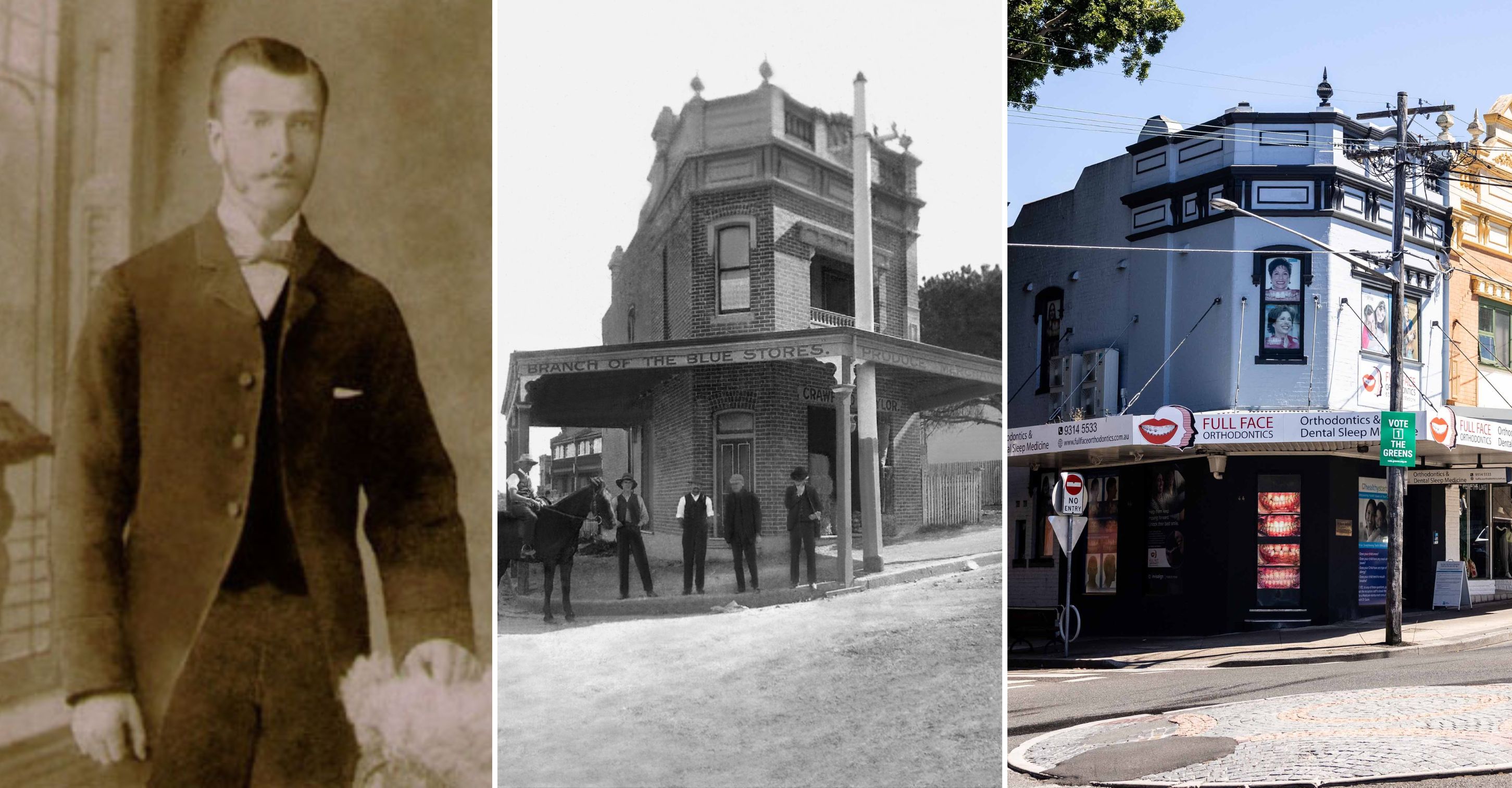
The era from the 1914-1920s was a boom era for the businesses in the Randwick municipality. The Spot was leading the local shopping precincts with Pauline Curby (2009) acknowledging the ‘mushroom-like growth’ in the business centres particularly in the St Paul Street shopping precinct in Lower Randwick.
Sand’s Sydney Directory (a precursor to the old white pages telephone directory) lists the business owners on both sides of St Paul’s Road and Perouse Road as well as the residents at both ends of the shopping strip. In 1920 there was amongst others: a butcher, newsagent, confectioner, fruiterer, savings bank, tobacconist, hairdresser and general grocery stores. It may be interesting for locals to note the house names of properties in St Paul’s Street. This was an old-fashioned means of the postal staff finding your house to deliver correspondence in the days of snail mail – long before the advent of email and the internet. Have a look next time you are walking around to see if you can ‘spot’ some current house names.
Whilst businesses flourished at The Spot in 1920s Randwick, one business – the billiard hall – became known for all the wrong reasons. It was a wild old winter’s night at The Spot, Friday 17 August 1928, according to The Sydney Morning Herald of the next morning, when 23 young men were arrested for illegal gambling at the billiards hall. This was reported as part of a ‘crime wave’ that was sweeping Randwick and causing sleepless nights for local politicians and police. Local residents were making desperate representations to Randwick Council and local MPs at all levels to ‘do something’ to restore law and order. Eventually calm prevailed.
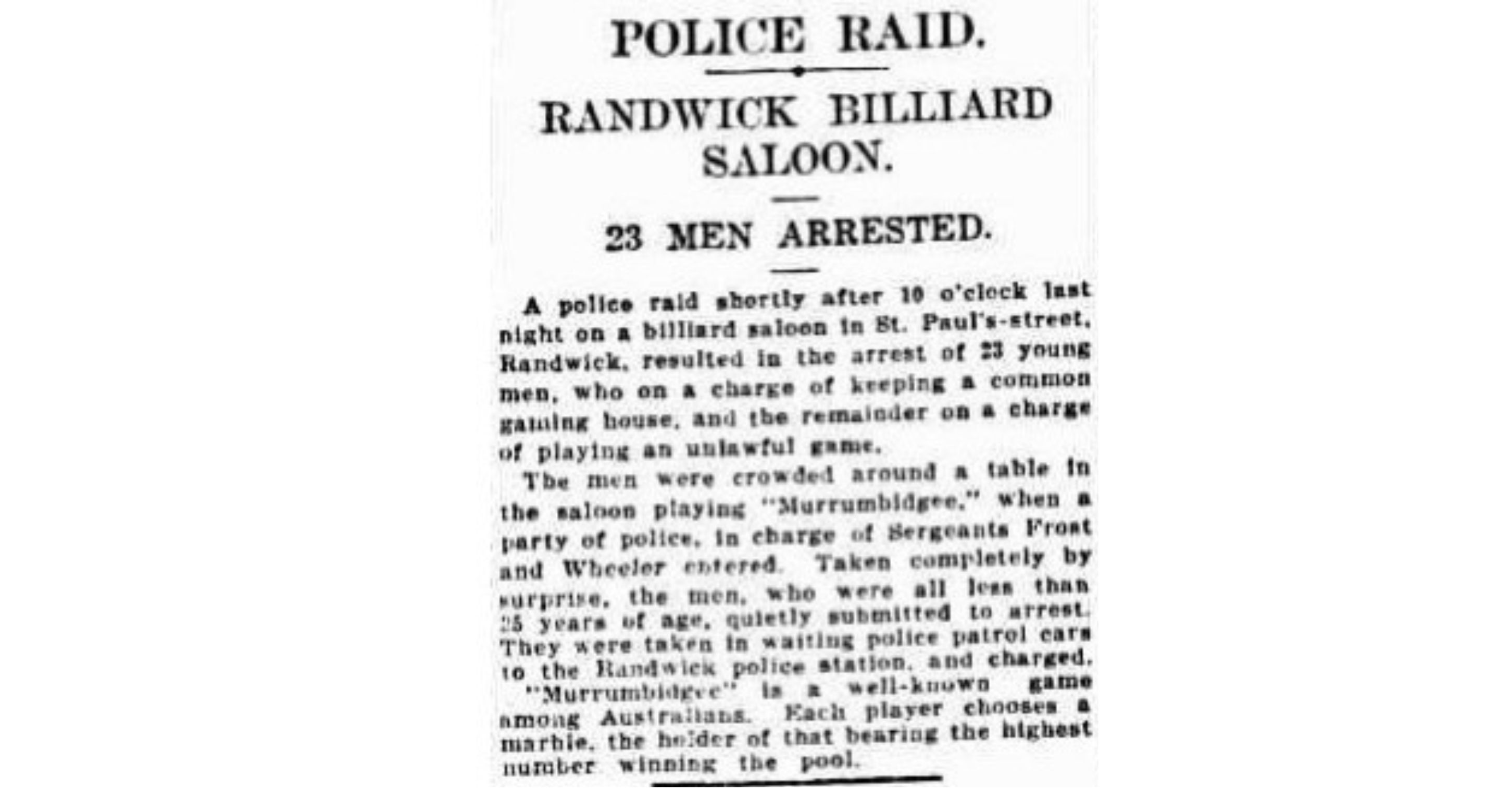
The same billiard hall- listed as 34 St Paul’s Street in 1930 – and large as it was – later became the perfect location for the iconic Salvio’s Ballet Slipper factory. Salvio’s became renowned throughout Sydney by all aspiring young dancers for several generations – supplying beginner dancers right through to The Wiggles and The Australian Ballet. The Spot and its businesses were emblematic of the times, with migrants such as Enricho Salvio carving out a successful and peaceful new life for their families. Salvios operated in Randwick from 1943- 2016, after starting in Melbourne. To this day, The Spot festival aims to showcase and embrace all that we celebrate about our multicultural society.
The architecture of The Spot shopping precinct has remained largely unchanged, the genesis of its charming village vibe. We can mark the passing of decades in the types and styles of business and the societal trends in leisure activities. Those old enough will remember the good old days of the video shop seen on the bend, in this 1980s view of The Spot taken by the library over 40 years ago. These are the days before streaming services when you got your movies from the local video shop. The businesses at The Spot may have changed over time but the shop fronts remain largely unchanged – save for a lick of British Paints as advertised above the shop awnings in the 1980s.
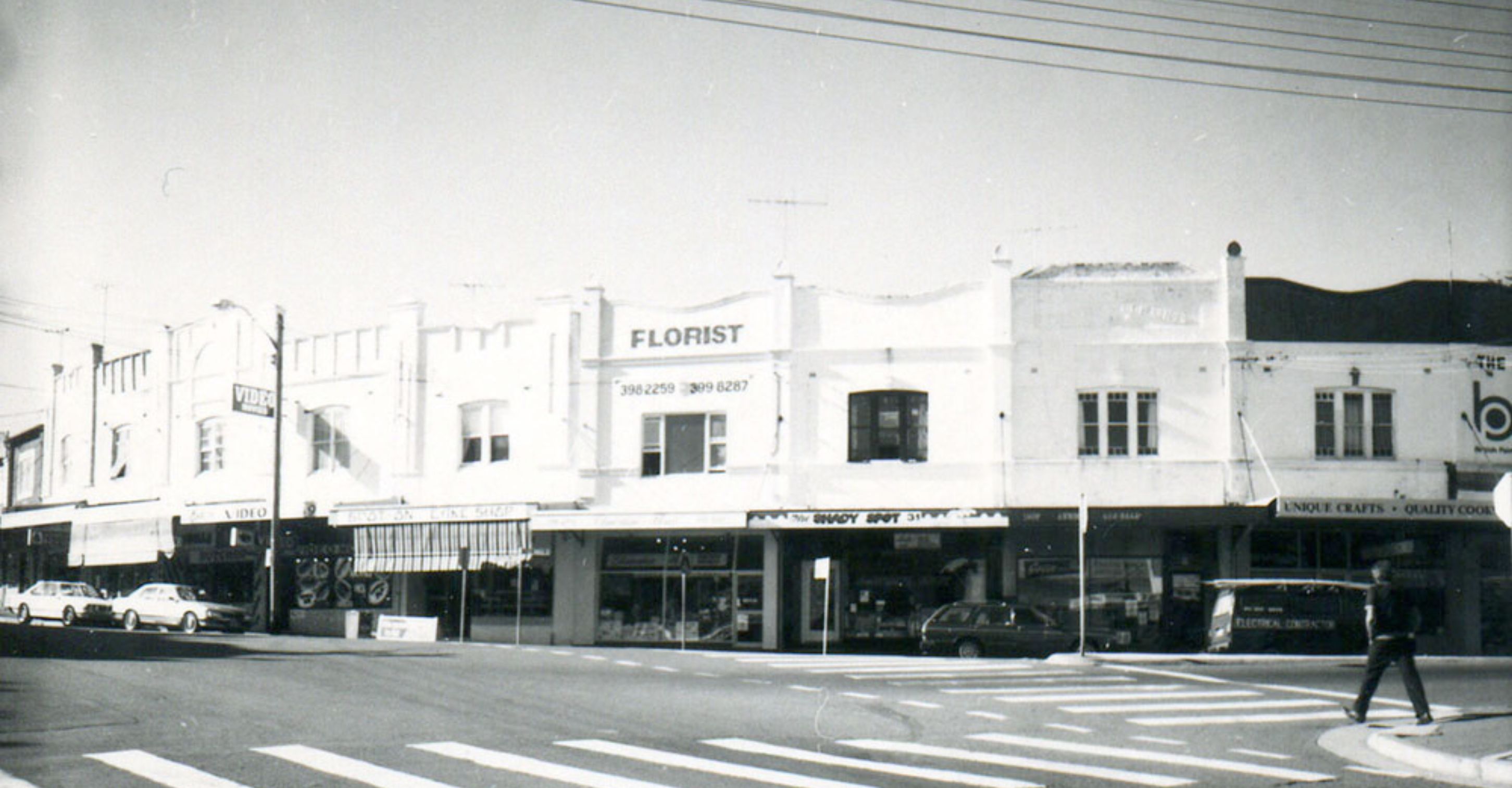
One business that has stood the test of time and leisure trends is the iconic art deco Ritz Cinema. Designed by architect Aaron Bolot, The Ritz opened in 1937. It is now one of the few remaining art deco cinemas in Sydney. By the 1980s the theatre was facing the threat of demolition, having outlived Coogee’s Boomerang Theatre and Randwick’s other theatre The Odeon, in Belmore Road. Community action to save the iconic art deco Ritz Cinema was widespread and persistent. The Ritz has drawn generations of locals to The Spot in their leisure hours. Thank goodness for Randwick’s community spirit, saving this icon of our local heritage!
Today, The Spot has emerged as a pre-eminent retail district as predicted all those years ago in 1941. It also remains as a ‘hub’ or ‘spot’ for transport and social interactions. Locals can still be heard saying, “Meet me at The Spot”
The Australian Film Walk of Fame was inaugurated in 2008, celebrating Australian stars of film who are commemorated with stars in the pavement outside The Ritz Cinema, at The Spot. The latest 2022 inductee to the Australian Film Walk of Fame was Leah Purcell (2022)
Randwick Council also launched The Spot Festival in March 2008. It has grown to become one of the marquee events on the City’s calendar of community events, celebrating history, diversity, culture, and great food.
The Spot has always been ‘the’ place to be seen and has a rich history we celebrate every March. Come join in the fun.
By Georgina Keep
Local Studies Librarian
Randwick City Library
Originally published in the Autumn 2023 edition of Randwick SCENE magazine.
For more information about the spot visit the Randwick City council website: www.randwick.nsw.gov.au



